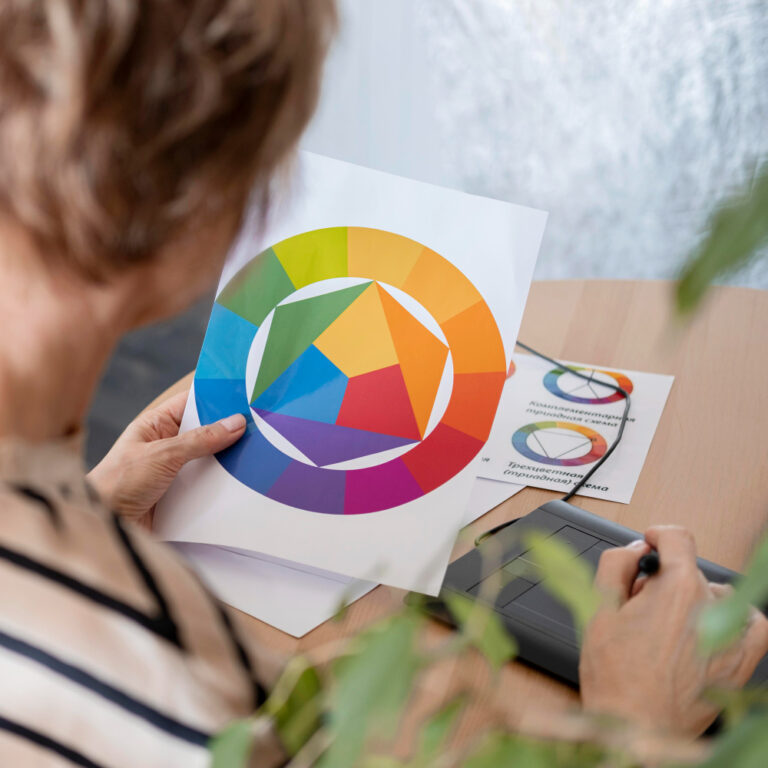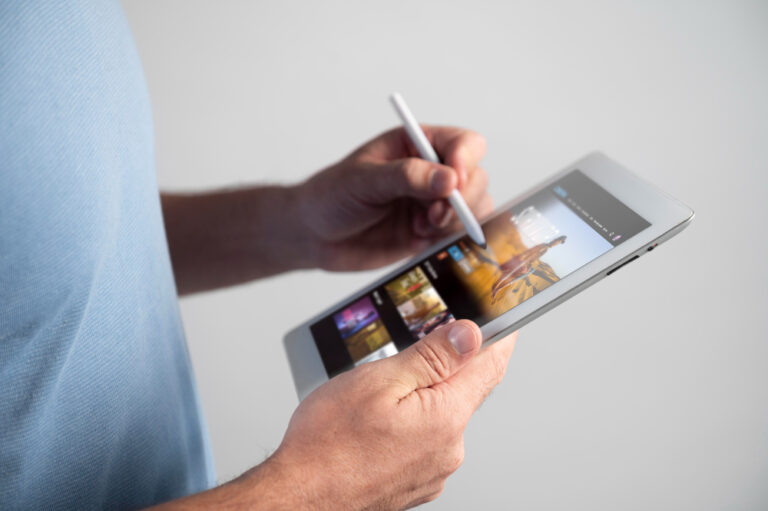The 10 Best Free Graphic Design Software for Marketers and Beginners
When it comes to grabbing attention, pictures and graphics are super powerful. For folks diving into graphic design, free software is a golden ticket. It lets you get all creative without worrying about money. These tools are a perfect place to start because they don’t cost a penny. You can explore your ideas, make cool designs, and experiment without any financial stress. This blog is all about the top 10 free graphic design software options. They’re awesome for marketers and beginners who want to make eye-catching stuff without breaking the bank.
The demand for captivating visuals and stunning graphics has never been higher. Whether you’re a marketer looking to create eye-catching promotional materials or a beginner eager to unleash your creativity, having the right graphic design software at your fingertips is essential. But with so many options available, finding the best free graphic design software can feel like searching for a needle in a haystack.
Fear not! In this blog, we’ve curated a list of the top 10 free graphic design software tools specifically tailored for marketers and beginners alike. From logo designs to designing engaging social media posts, these software solutions offer a wealth of features and functionalities to bring your creative vision to life. So, if you’re ready to dive into the world of graphics software and elevate your design game, read on to discover the perfect tool for your needs. Whether you’re a seasoned pro or just starting out, there’s something here for everyone. Let’s explore the best graphic design software options that are sure to inspire and empower you on your creative journey.
What is the Best Free Graphic Design Software?
When it comes to finding the best free graphic design software, it’s key to consider what makes a tool stand out. Look for software that’s easy to use, giving you the flexibility to create various designs. Versatility matters too – the ability to handle different kinds of projects is a big plus. Comprehensive toolsets are important; they provide you with a wide range of tools to explore and create stunning visuals. For marketers and beginners, user-friendliness is crucial. It makes learning and using the software much smoother. Ultimately, when searching for the top free graphic design software, keep these qualities in mind to find the perfect fit for your projects.
The Best Free Graphic Design Software for Marketers and Beginners:
1. Canva:
Canva stands out for its simple and user-friendly interface, making it a hit among beginners and marketers. It offers a wide array of templates, allowing easy customization for various design needs. The platform’s intuitive drag-and-drop functionality simplifies the design process. However, its advanced editing capabilities are somewhat limited compared to more complex software. Still, for quick and visually appealing designs, especially for social media posts, presentations, and marketing materials, Canva remains a top choice.
- Intuitive Interface, Rich Templates: Canva is great because it’s easy to use and offers lots of ready-to-use templates. This means you don’t have to start from scratch; you can choose a design and personalize it.
- Pros – User-Friendly: It’s very beginner-friendly. You don’t need much experience to start creating beautiful designs.
- Cons – Limited Advanced Editing: While it’s easy to use, it might not have all the advanced features that some professional designers might need.
2. GIMP:
GIMP is renowned for its robust editing suite, providing an extensive range of features comparable to professional software. It’s ideal for users seeking powerful editing tools without the hefty price tag. However, GIMP has a steeper learning curve, demanding more time and effort to master its functionalities. Once familiarized, its capabilities in image manipulation, retouching, and graphic design make it a go-to for intricate and detailed projects.
- Robust Editing Suite: GIMP offers a lot of powerful tools for editing images. It’s like a free version of Photoshop.
- Pros – Extensive Features: It has many features that can do a wide range of tasks, making it great for more complex projects.
- Cons – Steeper Learning Curve: It might be a bit harder for beginners to learn compared to simpler tools.
3. Inkscape:
As a powerhouse for vector graphics, Inkscape excels in scalability and precision. Its focus on vector-based design allows for high-quality, resizable graphics using a graphic software without losing resolution. However, its complexity can pose a challenge for beginners. Learning to navigate its comprehensive toolset might take time, but once mastered, Inkscape becomes an invaluable tool for designing logos, illustrations, and intricate designs.
- Vector Graphics Powerhouse: Inkscape is excellent for creating scalable, high-quality graphics.
- Pros – Scalability: Your designs can be resized without losing quality, which is essential for logos and illustrations.
- Cons – Complex for Beginners: It can be tough for newcomers because it offers a lot of features that might seem overwhelming at first.
4. Vectr:
Vectr offers a simplified approach to vector design, emphasizing collaboration and ease of use. It’s particularly beneficial for beginners looking to dip their toes into vector-based graphics. However, this simplicity comes with a trade-off; Vectr lacks some advanced features found in more complex software. Still, its collaborative features make it suitable for team projects and quick design iterations.
- Simplified Vector Design: Vectr is straightforward for creating vector graphics, and it allows collaboration.
- Pros – Collaborative: Multiple people can work on the same design simultaneously, which can be handy for team projects.
- Cons – Fewer Advanced Features: It might not have as many high-level tools compared to more complex software.
5. Gravit Designer:
Known for its comprehensive toolset, Gravit Designer is a cross-platform software catering to various design needs. Its versatility allows users to create intricate designs, illustrations, and layouts. However, its file compatibility can be limited compared to other software, which might pose challenges when working with certain file types. Despite this limitation, its capabilities across different design tasks make it a solid choice for marketers and beginners alike.
- Comprehensive Toolset: Gravit Designer offers a wide range of tools for designing.
- Pros – Cross-Platform: It works on different operating systems, making it accessible across various devices.
- Cons – Limited File Compatibility: Sometimes, it might have issues when opening files from other software, which can be a drawback if you’re working with different file types frequently.
6. Krita: Digital painting expertise.
Krita excels in digital painting, offering a diverse array of brushes perfect for artistic creations. Its advantage lies in the variety and quality of brushes available, catering to different styles and needs. However, it’s not the best choice for working extensively with vectors, lacking some functionalities in this area.
- Digital painting expertise with a wide array of diverse brushes.
- Pros: Krita is exceptional for digital painting, offering an extensive collection of diverse brushes that cater to various artistic styles. It’s great for artists looking to create detailed and intricate artwork.
- Cons: However, Krita isn’t the best choice for working with vectors, limiting its capabilities in that aspect.
7. Photo Pos Pro: Photo editing prowess.
Photo Pos Pro software stands out for its photo editing capabilities, boasting an intuitive interface that’s great for beginners. Its advantage lies in its ease of use, making editing photos straightforward. However, it falls short in text tools, offering limited options for adding text to images.
- Photo editing prowess with an intuitive interface.
- Pros: Photo Pos Pro is excellent for editing images, boasting an interface that’s intuitive and user-friendly. It’s ideal for beginners looking to enhance their photos with ease.
- Cons: Yet, it lacks a wide range of text tools, which might limit creative options for adding textual elements to images.
8. Paint.NET: User-friendly editing.
Paint.NET is user-friendly, making it accessible to beginners. Its advantage lies in its simplicity, offering basic yet effective editing tools. However, it might not be suitable for those seeking more advanced features beyond the basics.
- User-friendly editing software with simplicity as its core advantage.
- Pros: Paint.NET is known for its simplicity, making it easy for beginners to grasp. It offers a straightforward user interface for basic editing needs.
- Cons: However, it might not have as many advanced features compared to other more complex software, limiting its capabilities for intricate designs.
9. Pencil2D: Animation tool for beginners.
Pencil2D serves as an introductory animation tool, lightweight and user-friendly. Its advantage lies in its simplicity, ideal for beginners starting with animation. Yet, it lacks some advanced tools needed for complex animation projects.
- Animation tool tailored for beginners, known for its lightweight nature.
- Pros: Pencil2D is lightweight and user-friendly, making it an excellent choice for those just starting with animation. It’s perfect for simple animation projects.
- Cons: Nevertheless, its simplicity comes with limitations in terms of advanced tools necessary for more complex animations.
10. Blender: 3D modeling and animation.
Blender is renowned for its extensive capabilities in 3D modeling and animation. Its advantage lies in its comprehensive feature set, catering to professional-level projects. However, its learning curve is steep, making it challenging for beginners to grasp quickly.
- Comprehensive 3D modeling and animation capabilities.
- Pros: Blender offers extensive features for 3D modeling and animation, making it a powerful tool for professionals. It allows for complex and detailed 3D projects.
- Cons: However, its steep learning curve might be challenging for beginners, requiring time and dedication to master its functionalities.
Picking the Right Platform for Graphic Design:
Choosing the perfect software for graphic design involves a few key factors. Firstly, think about what your project needs – each software has its strengths. Then, consider how easy it is to use. You don’t want something too complicated that takes forever to learn! Matching the tool to your skills and what you want to achieve with your project is super important. Whether you’re a beginner or a marketer, finding software that fits your comfort level and goals is the key. Also, keep in mind that some software might be better for specific types of designs, so knowing what you’ll be creating can help you pick the right one.
Creating a Great First Impression:
Making a memorable first impression matters a lot, especially in marketing. Pictures, videos, and designs play a big role in how successful your marketing efforts can be. Luckily, there are free tools out there that anyone can use to create amazing visuals. These tools are a blessing for both newbies just starting out and experienced marketers working on a tight budget. With these tools, you can create eye-catching and powerful content without worrying about how much it’ll cost. They empower you to bring your ideas to life, making your marketing materials stand out and grab people’s attention. In an upcoming blog, we’ll dive into the top 10 free graphic design software options that are perfect for marketers and beginners looking to make their content shine.
Wrap Up
Free graphic design software is like a magical door to let your creativity fly, especially for marketers and newcomers in the design world. These tools are a playground where you can explore, experiment, and discover your inner artist without worrying about spending money. They break down the barriers that financial limitations often create, letting you dive into designing without holding back. So, jump into these tools, play around with them, and watch as your artistic potential blooms without any cost getting in the way. It’s a fun and accessible way to unleash your creativity!
FAQs:
1. What features should I look for in graphic design software as a marketer?
– Look for features such as a user-friendly interface, customizable templates, access to a diverse range of fonts and graphics, compatibility with various file formats, and the ability to export high-quality images for print and digital use.
2. Can I use free graphic design software to create professional-quality logos?
– Yes, many free graphic design software tools offer robust features specifically designed for logo design, including logo templates, vector editing tools, and the ability to export logos in high-resolution formats suitable for print and digital use.
3. Are there any limitations to using free graphic design software compared to paid options?
– While free graphic design software often offers a wide range of features and functionalities, there may be limitations in terms of advanced tools, customer support, and access to premium content. However, for marketers and beginners, free options can still provide excellent value and versatility for creating visually stunning graphics.


![How to Design a Logo [Step-by-Step Guide]](https://marketscrawl.com/wp-content/uploads/2023/10/female-logo-designer-working-graphic-tablet-768x512.jpg)




